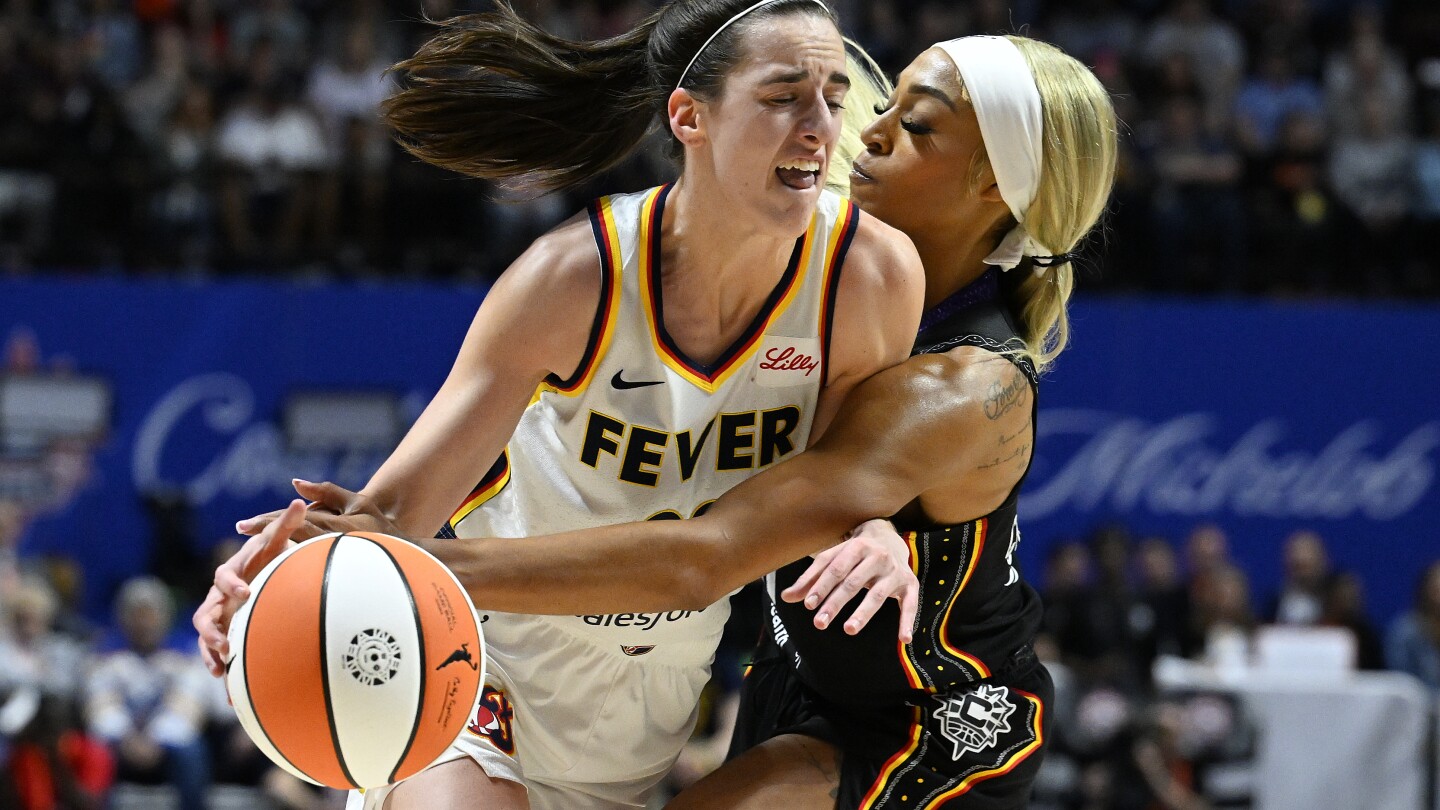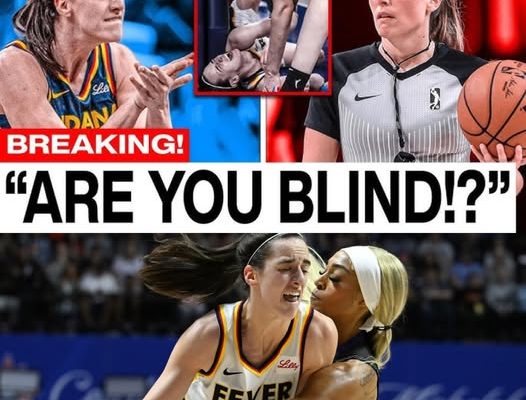
WNBA Referee BANNED After New Caitlin Clark Injury Footage LEAKS!

A seismic shock has rattled the WNBA world as newly leaked footage of Caitlin Clark’s recent injury has gone viral, leading to the unprecedented banning of a league referee. The incident, which unfolded just moments before this article was published, has sent shockwaves through the basketball community, reigniting fierce debates about player safety, the integrity of officiating, and the treatment of the league’s brightest stars.
Caitlin Clark is, without question, the face of the new WNBA era. Her arrival brought a massive surge in viewership, with her games averaging close to 1.2 million viewers—nearly triple the audience of non-Clark contests. She filled arenas wherever she played, sparked record merchandise sales, and attracted a legion of new fans who had never watched women’s basketball before. Clark’s presence transformed the league, making her not just a player but a phenomenon whose influence extended far beyond the court.
But that momentum came to a screeching halt during a high-stakes matchup against the New York Liberty. In a tense, closely fought contest, Clark collapsed to the floor after a hard collision, leaving fans and teammates in stunned silence. The initial broadcast showed little detail, but the newly leaked footage—now circulating widely online—has painted a much clearer, and far more troubling, picture. The video appears to show a blatant foul committed against Clark, one that went entirely uncalled by the officiating crew. As Clark writhed in pain, clutching her leg, the referees allowed play to continue, a decision that immediately drew criticism from commentators and fans alike.
Clark was later diagnosed with a quad strain and has since missed several games. The impact on the league was immediate and severe. Viewership for Indiana Fever games without Clark plummeted by nearly 40 percent, with one recent contest drawing just 851,000 viewers—a dramatic drop from the million-plus audiences Clark regularly commanded. The league’s financial and cultural momentum, so closely tied to Clark’s star power, has suddenly stalled.
The controversy exploded when the leaked footage surfaced on social media. Fans, players, and analysts erupted with outrage, calling the play “dangerous,” “reckless,” and “a disgrace to the league.” The video quickly amassed millions of views, with hashtags like #ProtectClark and #WNBAJustice trending across platforms. The most damning aspect of the footage, according to many, was the referee’s apparent indifference to the obvious foul. Accusations of inconsistent officiating and a double standard in how Clark is treated compared to other stars began to swirl, with some suggesting that Clark is being unfairly targeted on the court.
In response to the growing uproar, the WNBA took the extraordinary step of banning the referee involved in the incident. In a brief statement, league officials acknowledged the “serious lapse in officiating standards” and pledged to review its protocols for player safety and referee accountability. While the swift action was praised by some, many fans and analysts believe it is too little, too late. “You can’t undo the injury or the impact this has had on the league,” one commentator noted. “But you can start making real changes to ensure it never happens again.”
The fallout from the incident has exposed deeper issues within the WNBA. For years, the league has struggled with questions about the quality and consistency of its officiating. The Clark injury has brought these concerns to the forefront, prompting calls for a comprehensive overhaul of referee training, stricter enforcement of player protection rules, and the implementation of video review for potentially dangerous plays. Many believe that the league’s credibility and future growth depend on its willingness to address these systemic problems head-on.
At the heart of the controversy is the question of how the WNBA treats its stars. Clark’s meteoric rise has been a boon for the league, but her injury and the perceived lack of protection have cast a shadow over the WNBA’s progress. Fans worry that if the league cannot protect its marquee players, it risks alienating the very audience it has worked so hard to attract. The stakes are high—not just for Clark and her team, but for the entire future of women’s basketball.
As the WNBA faces mounting pressure to restore faith in its officiating and prioritize player safety, the world is watching. The league’s response to this crisis will define its reputation for years to come. For Caitlin Clark, her fans, and the sport as a whole, the hope is that this incident serves as a turning point—a catalyst for meaningful change and a renewed commitment to fairness, integrity, and the well-being of every athlete who steps onto the court.



